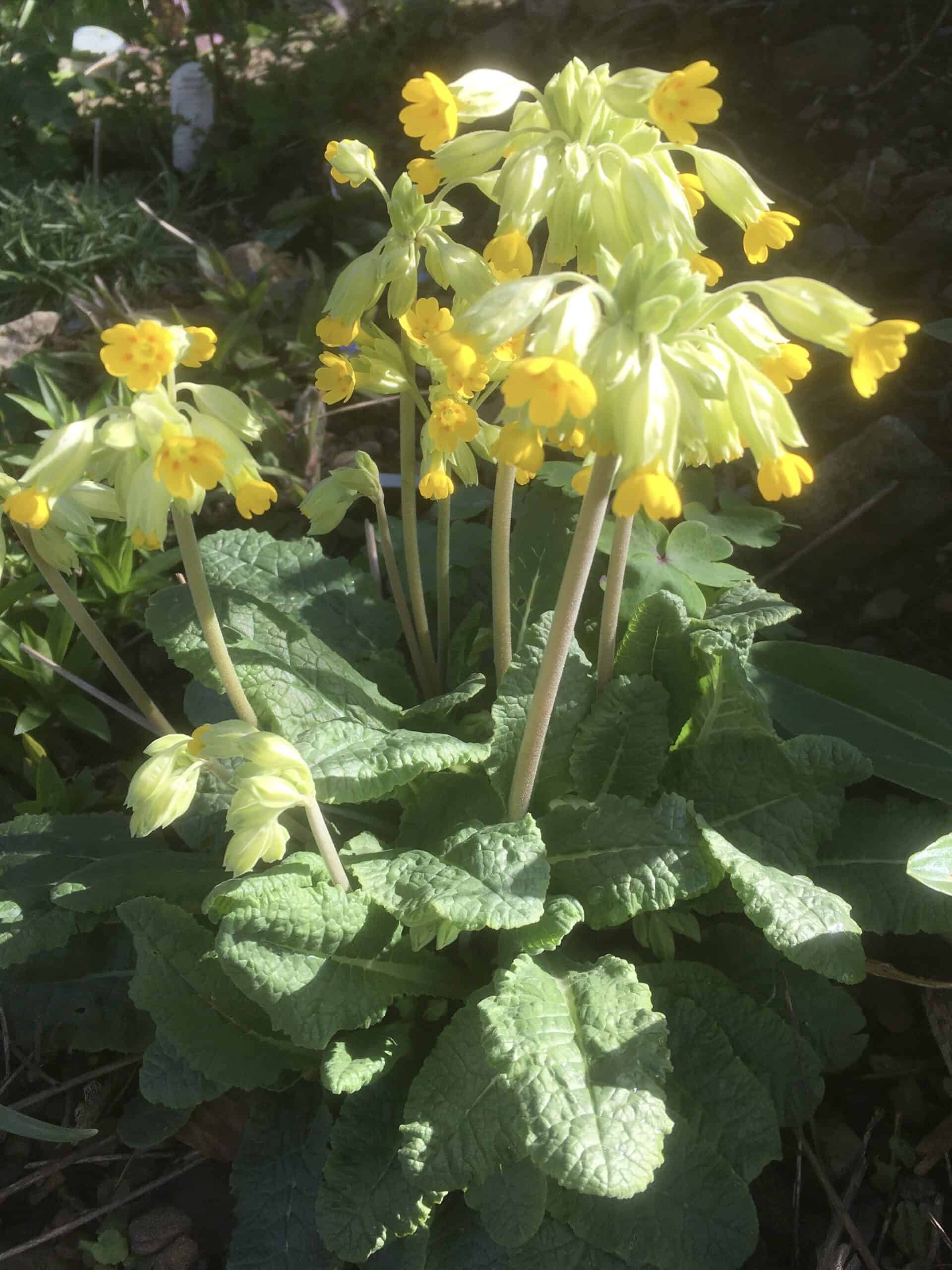Cowslip (Primula veris)
Flowers: April to May. Height: 25cm (10in).
Gathered since the Middle Ages it was known by various names including Peagle, Primerole, and Cowslyppe, a name thought to be derived from “cow slop” or dung possibly because it grew in meadows and pastures where cattle grazed. Other names were Lady’s Keys, because it unlocked the treasures of spring, and St. Peter’s Wort as the cluster of blossoms on a single stalk resembles a bunch of keys, symbolic of St. Peter.
Medicinal: According to Jacob Meydenbach’s Hortus Sanitatis (1491), cowslips were warming and drying in action and rejuvenated the elderly by alleviating suffering associated with the pains and cold of winter. As a soporific tea it was used as a sedative for treating headaches. For treating wounds, the leaves were applied. Cowslip was a favourite of the 12th century German nun and famous herbalist, Hildegard of Bingen and, with its flowers having a fuzzy, lung-like appearance, was used for respiratory ailments.
Culinary: A Noble Boke off Cookry (published c1468 – author unknown) gives a recipe for sweet pottage made of primerole and ground almonds. Flower buds were eaten in salads and the young leaves boiled as a potherb.
Doctrine of Signatures: The freckled throats of the flowers were an indication of its efficacy in removing spots and pimples from the skin when made into a skin cleansing lotion while the nodding flower heads of the cowslip were a sign of its usefulness against trembling of the limbs.
Magic & Myth: Also called Fairy Cup, as fairies were supposed to like nestling in the drooping bell of cowslip flowers.



